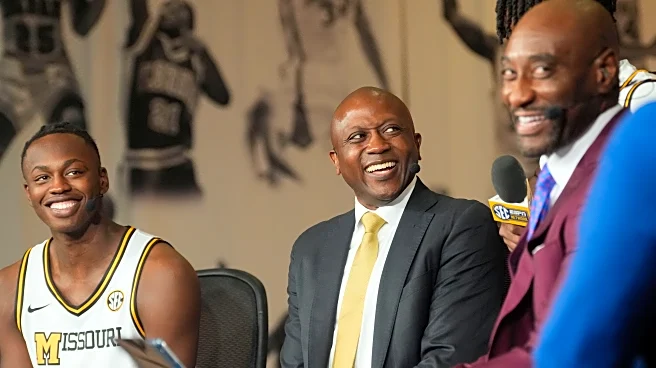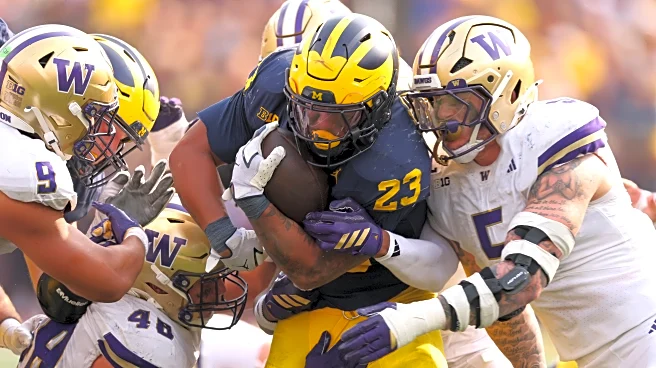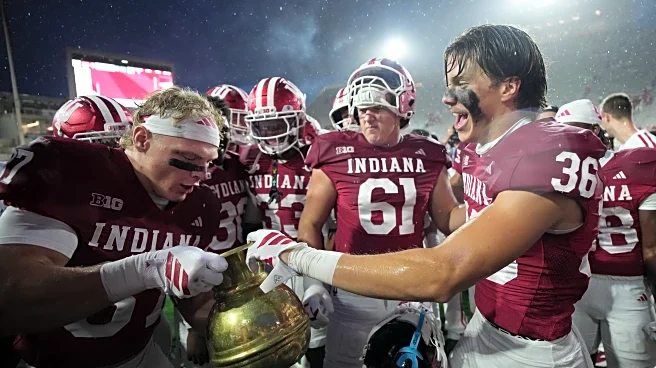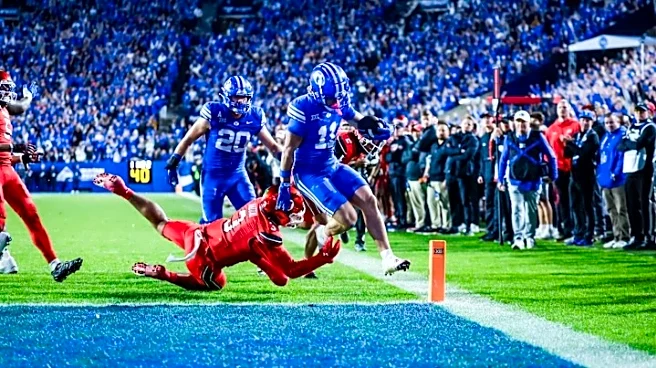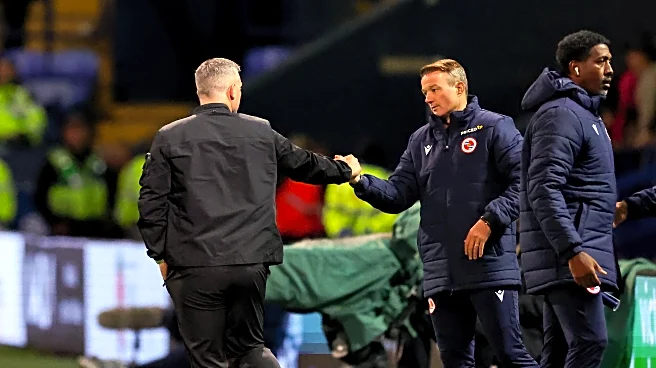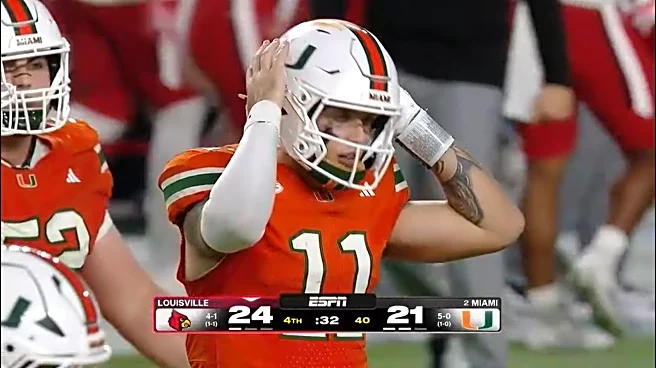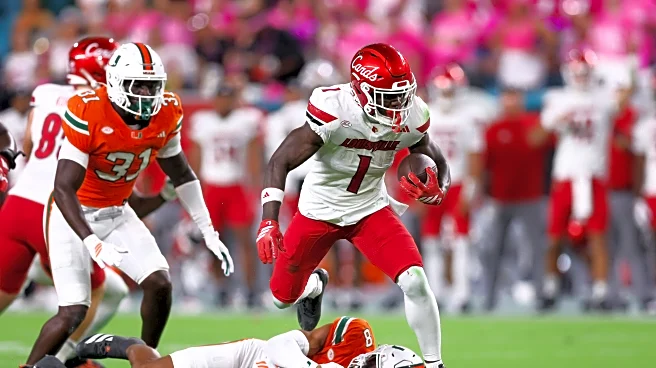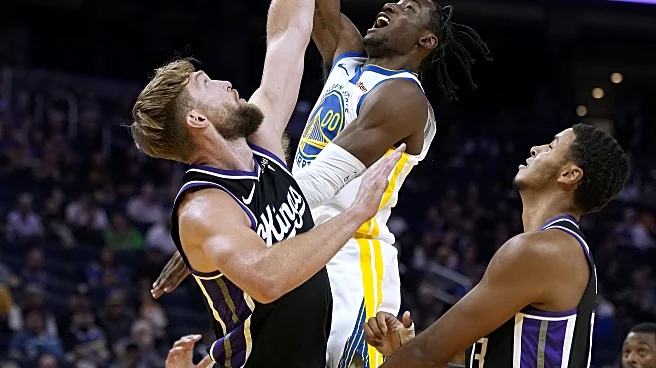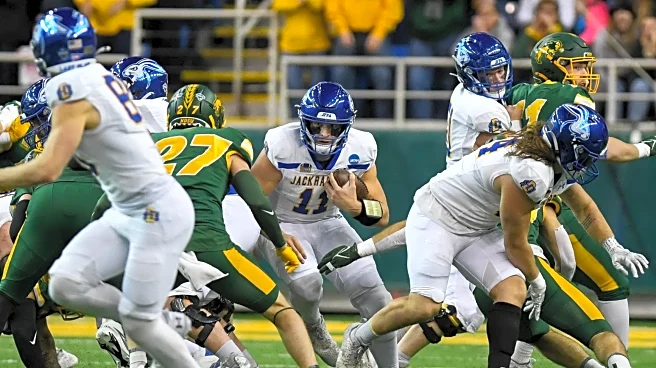In basketball the term rebound is defined by possession after a missed shot. But beyond basketball it’s typically defined as a recovery following a setback. The first item is something Mizzou struggled
with for the first two seasons during Dennis Gates’ tenure. The latter defined the third.
There were a lot of prognosticators who doubted Gates after his second season. After all there aren’t too many winless conference seasons on the resume of the leagues many great coaches. But the Tigers depth and talent level was noticeably higher to anyone paying attention. There was a great transfer portal class, good returning talent, and a highly rated freshman recruiting class that boosted the Tigers back into the top half of the league.
The toughest league in the country caught up to the Tigers a bit down the stretch as they struggled towards the end of the season. But the season was a full rebound. They made the NCAA Tournament as a 6 seed, beat the eventual national champions on their home floor, and restored a lot of pride in Columbia.
But last season there were very little expectations outside of Missouri. This season most seem to still be in a wait and see for what the Dennis Gates era is going to look like at Mizzou. Two good years, one awful one. It’s worth noting that Missouri has not made back to back NCAA Tournaments as a member of the SEC, and the last time they went to the Tournament in back to back years were the first two seasons under Frank Haith in 2012 and 2013. Gates is trying to fix all that in 2026.
Previous SEC Previews:
- 7. Auburn Tigers, 9-9
- 8. Texas Longhorns, 9-9
- 9. Mississippi State Bulldogs, 8-10
- 10. Vanderbilt Commodores, 8-10
- 11. Texas A&M Aggies, 8-10
- 12. Oklahoma Sooners, 8-10
- 13. Ole Miss Rebels, 7-11
- 14. Georgia Bulldogs, 6-12
- 15. South Carolina Gamecocks, 4-14
- 16. LSU Tigers, 3-15

Missouri Tigers
- Last season: 22 – 12 (10-8 in conference) #19
- The Masses Prediction: 7th in conference, 10.29 – 7.71
- SEC Media Pick: 7th in Conference
- Analytics Average: 8th in conference, 29th overall

HEAD COACH: Dennis Gates | 4th Season, 55-46
In year four this is fully Dennis Gates’ program. The transfer portal allows coaches to reset quickly, but there’s still value in retention and development, and Gates has multiple players who have been with him three seasons now, and half the roster who’ve been with him at least two years. His two best seasons, and his success at Cleveland State, was centered around retention. Maybe retention seems like a weird framing in his first season when he imported a lot of players, but he also imported a lot of HIS players from Cleveland State. He believed in the guys he has, as long as he has a chance to build with them.
As much as there seems to be that skepticism because of two years ago, I’m not sure it’s all that warranted. Wherever Gates has gone he’s succeeded, and that’s the sort of resume you want in your head coach.
Succeeding at this level, in the best conference in the country, with more competitive payrolls than anywhere else, is not a given. Even for the previously successful. But looking at Gates history, from his time at Florida State where he helped Leonard Hamilton achieve new heights for that program, to his complete build of the Cleveland State program, he’s been creative and thoughtful, but he’s also won. So when good coaches have talent, it’s usually safe to think they’ll perform well.

What does consistency look like for a healthy Missouri program? It’s hard to know, there have been a lot of valleys for the Tigers over the years. The last 10 years starts with two full seasons of the Kim Anderson era. Cuonzo Martin restored some success, but it was merely a dig out of the very bottom (until his last year). But Mizzou hasn’t been consistently good since the last three years of Mike Anderson and into the Frank Haith years.
There are high hopes for Dennis Gates amongst Mizzou fans. At the very least the expectation this season is a return to consistency.
LOST PRODUCTION
2nd in % minutes, 57.85% | 1st in % points, 56.79% | 1st
in % possessions, 54.45
There aren’t many teams left who still work to retain players, but Missouri is looking like one of them. They lost three players to the transfer portal and those players were 10th, 11th, and 14th in minutes. But 5 players in the top 9 for minutes all had expiring eligibility. Missouri is definitely going to miss Tamar Bates and Caleb Grill who accounted for nearly 30% of their points from last year, including 130 of the team’s total 296 made three pointers. Then they’re also replacing another 36 threes from Marques Warrick.
Grill and Bates got a lot of the press because of their ability to drive the offense through shot making. When Grill was on a heater, there was no defense that could stop him. He could single handedly take the air out of opposing arenas. Bates was the vocal leader. Both players are not going to be easy for Mizzou to replace.


Returning production is rarely a thing this season within the SEC, but Missouri returns two All Conference level performers. All defensive team guard Anthony Robinson II and All SEC forward Mark Mitchell. Last season there was no one star on the team as Grill, Bates, and Mitchell all averaged just under 14 ppg. But while Grill and Bates were the flame throwers on offense, Mitchell was the steady presence. After a bit of a skid near the start of conference play, Mitchell went on a tear. After being relegated to an afterthought for two seasons at Duke, Mitchell took some time getting used to being a primary option. And Gates and his staff worked to get him easy looks, and the ball in his hands in all angles of the floor.
Anthony Robinson II should be considered the fire-starter. He plays with a fiery intensity, and is the best on ball defender in the conference. Robinson’s ability to create havoc on defense lead to a good many runouts and easy buckets for the Tigers a year ago. But his intensity could sometimes get the best of him, as he had a 5.3 fouls committed per 40 minutes. Which saw him spend more time on the bench than you’d like. But his per-40 minutes are excellent, and his ability to navigate ball screens and operate in the mid range kept the Mizzou offense on time.
Another returner is Jacob Crews, a transfer from UT-Martin who took some time to adjust but over the final 12 games in conference play he shot 41.3% from three point range, 61.5% from inside the arc, and chipped in 8 points per game. A more comfortable Crews could make a big difference for a team lacking in shooting. Trent Pierce can also provide shooting, the 6’10 junior made a jump and started 19 games last year. He had several big highlights like an emphatic drive and dunk at Florida, but he struggled to play with consistency.
Highly rated freshmen T.O. Barrett, Annor Boateng, and Trent Burns all committed to coming back despite not having much of a role last year.
In need of a more steady hand on offense to replace some of the lost production Gates turned to the transfer portal. The biggest signing is likely UCLA transfer guard Sebastian Mack. A hard driving, physical, combo guard Mack saw his minutes dwindle a bit after having a big freshman season. But he was still Mick Cronin’s late clock specialist and had a 57% free throw rate. The Tigers also added Jayden Stone, a bit of a black box of a transfer who didn’t play last year at West Virginia due to an injury, but did average 20 points at Detroit Mercy two years ago.
Jevon Porter, brother of Michael Jr and Jontay, comes home to Columbia for his last season. And joining him in the front court is bouncy Arizona State transfer center Shawn Phillips, and sharp shooting Oklahoma big man Luke Northweather, a Jefferson City native.


Missouri has two of the best returning players in the conference and then a whole lot of question marks, so figuring out a depth chart beyond Robinson and Mitchell is difficult. Couple that with the fact Dennis Gates likes to experiment his way through November, and play a whole lot of his roster, and you have a bit of a convoluted mess of a depth chart.
Sebastian Mack looks like the most likely third wheel because he’s been that already at UCLA. He was the third leading scorer at UCLA each of the last two years. Beyond that there’s no certainty with how the rotation will play out.
Crews looks like a lock for some level of role, he’s reportedly taken on a bigger leadership role and attended Mizzou’s SEC Media days with Robinson and Mitchell. And he’s the only proven shooter on the roster. Then there’s Trent Pierce, who started 19 games last year but had a bunch of ups and downs all season, if Pierce can find some consistency, he’ll be a vital player in the rotation.
Jevon Porter has been one of the more consistent players, but he’s been so in the WCC. Meanwhile T.O. Barrett, Annor Boateng, and Trent Burns have all not seen the floor enough to know what they’ll provide.
Missouri’s coaches and social media have been pumping out the Shawn Phillips content, but Phillips has been wildly inconsistent in his three years of college. And we’ve already brought up the black box of Jayden Stone. Mix in a couple of freshmen who were outside the top 100 and you can see why there are so many questions around the depth.


Another schedule where it’s light on challenges through the month of November. Last year Gates scheduled an early road trip to Memphis, this year it’s to Howard. Last year Mizzou then rattled off 6 Quad four games, this year Mizzou has 6 Quad four games just with a Q3 game slipped in against Minnesota. That game is a return game from a home and home scheduled a few years ago. With the coaching turnover at Minnesota, Niko Nedved should make it possible for the result to end up as a Quad 2.
Missouri benefits from playing Kansas and Illinois each year. Then this year the trip to Notre Dame squeaks into a Q1 game, as part of the ACC-SEC Challenge.
In all 9 Q4 games is too many.
The opening of the conference schedule is as tough as it gets with a home contest against Florida then a road trip to Kentucky. Those two games are on the heels of the Braggin Rights game against Illinois. That’s three top 10 opponents in a row. The rest of the schedule is manageable as an SEC slate goes, none of their home and home opponents are projected by analytics to be in the top 4 of the league, and they do get Florida and Tennessee at home. Plus the two worst projected teams on the road.
THE RULING
If there are concerns going into the season it’s with the outside shooting. Mizzou’s returners shot 106 for 328 from beyond the arc which is just 32.3%. Mack is 50 for 169 on his career (29.6%), Porter is 110 for 343 (34.3%), Stone is 102 of 294 (34.7%), and Northweather has made 25 of 80 (31.3%). If you put all those numbers together Mizzou’s full roster has made 32.3% from outside the arc on over 1200 attempts. That would have gotten them 10th in the league last year, not awful but also not great. And only one team who finished below that finished higher in the standings (Texas A&M).
If Missouri is unable to consistently make outside shots, they’ll have more trouble scoring than last year, because the one thing the roster has proven it can do is get to the free throw line. Getting to the line relies on some room to operate against defenders in the paint, and you get there by creating open driving lanes with the threat of a three point shot. There’s more to drawing fouls than free driving lanes, but the point carries.
Shooting free throws is what this team will try to do a lot of. A season ago they ranked 1st in the SEC and 2nd in the country for generating free throws (FTA/FGA). Adding in Sebastian Mack will only stabilize those numbers, as Robinson and Mitchell were already towards the top of the league.
How good Missouri is this season will largely come down to how good the supporting cast can be. The Tigers looked like gangbusters last year when Anthony Robinson II and Trent Pierce were playing well, mostly because they knew they could get production from Mark Mitchell, plus Grill and Bates, and Tony Perkins was on his worst days still a quality guard. That framework of players was the ground floor of an NCAA Tournament team.
But Robinson and Pierce being effective, being scoring options, being positive defensive presences, made Mizzou an elite team. That’s the team which started 10-5 in the league and had a shot at a protected NCAA seed. That team beat Florida on the Gators home floor, and nearly beat Tennessee on their home floor, only done in by an abnormal shooting performance from the Vols. That team spanked Alabama and ran Georgia off the floor in their own gym.
Now Robinson and Pierce will be expected to be the foundation of the NCAA Tournament team along with Mitchell and Mack.
But what does Dennis Gates get from the rest of his roster?
Is Jacob Crews the new version of Caleb Grill? Can he take a volume of threes and be even better than he was down the stretch last year?
What will the Tigers get out of the 5 spot? Will Trent Burns or Shawn Phillips or Luke Northweather or even Jevon Porter provide a spark for the Tigers around the rim?
Another note is will Gates keep the second year leap going with T.O. Barrett and Annor Boateng? Both Robinson and Pierce were lightly used as freshmen on a bad team, but took leaps to help a top 20 basketball team. Again, those two players were the difference between Mizzou being a good team and a great team. And that’s where we land on two thirds of this roster.
Mizzou’s framework is that of a quality basketball team, and a likely tournament team. But with a few answers beyond the very top of the roster this is a team that could contend for the top of the conference.
My Results: Missouri Tigers — 6th in Conference, 10-8
About the preview: a number of respected basketball bloggers were asked to submit one pick for the entire league schedule game by game. The game by game option allows us to account for the unbalanced schedule when addressing any kind of power rankings. Each set of picks are reflected in “the Masses” picks. Included in “the Masses” are various SEC media members who made picks at my request, as well as additional credit given to the analytics projections.
If you’d like to submit your picks, click here for the Google Form we used. If you want to know your results, send me an email.
Additionally, instead of relying solely on KenPom.com for the analytics site projections, we’re taking the average of the four main sites (EvanMiya.com, BartTorvik.com, Haslametrics.com, and KenPom.com) to give a closer consensus picture. These are weighted a touch for reliability.
The projections: This is new! In an attempt to be as accurate as we could be we increased the amount of analytics used to make individual projections which influenced how these teams slotted in order. Matt Watkins used an indepth method for projecting the entire SEC transfer list, we then mixed in EvanMiya.com’s BPR projections, and BartTorvik.com’s preseason individual projections to round out the expected production based upon how each coach routinely uses his rotations.
GLOSSARY
* – an asterisk denotes a walk-on player
GP – Games Played
%min – percentage of total available minutes played, does not account for time missed due to injury
%poss – percentage of team possessions the player is responsible for ending a possession, whether by making a shot, missing a shot not rebounded by the offense or committing a turnover. For returning players this is noted as a percentage of total team possessions. For newcomers it was total possessions when that player was on the floor, better known as Usage Rate.
ORtg – Offensive Rating, similar to a points per possession but averaged out over 100 possessions. So it’s how many points a player would score if they were responsible for 100 possessions.
BPR – Bayseian Performance Rating, a single player efficiency metric created by Evan Miyakawa to determine both offensive and defensive impact when a player is on the floor.
PPG – Points Per Game, RPG – Rebounds Per Game, APG – Assists Per Game: All traditional statistics used to measure player production.
For newcomer player rankings, we used EvanMiya.com’ s rankings for transfers, and 247sports.com ‘s Composite Rating for Freshmen and Junior College signees.
